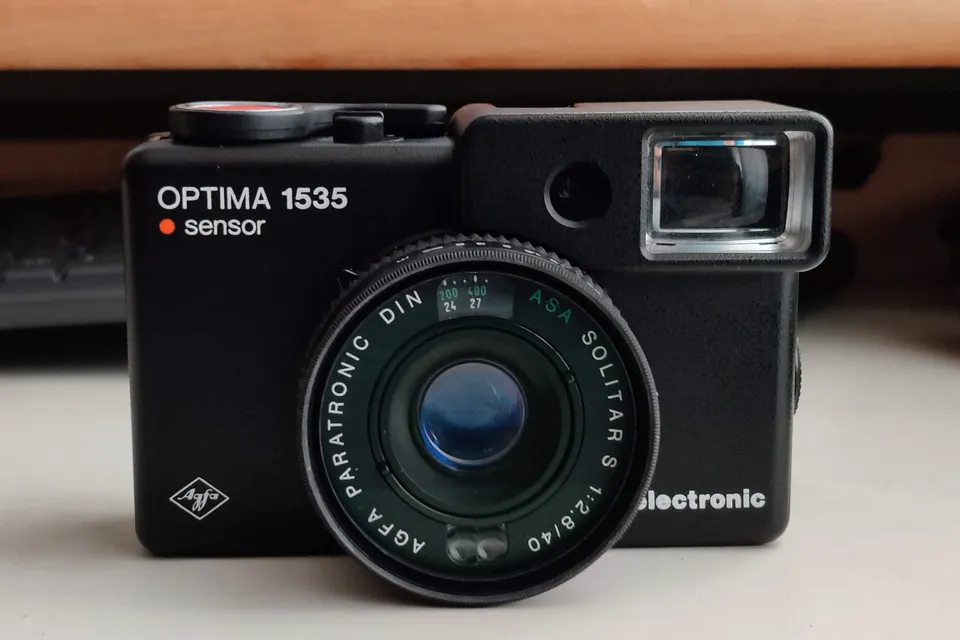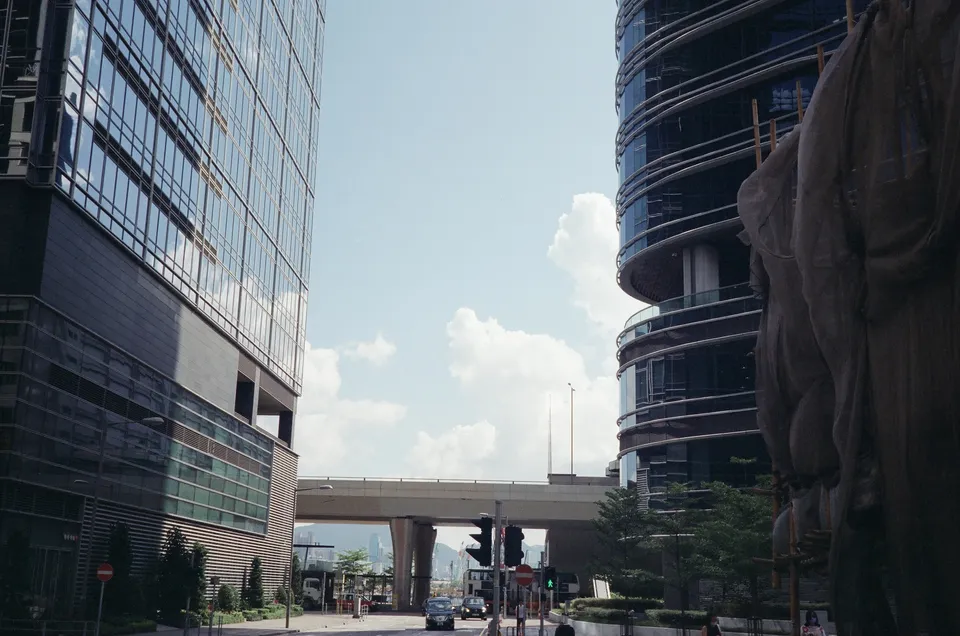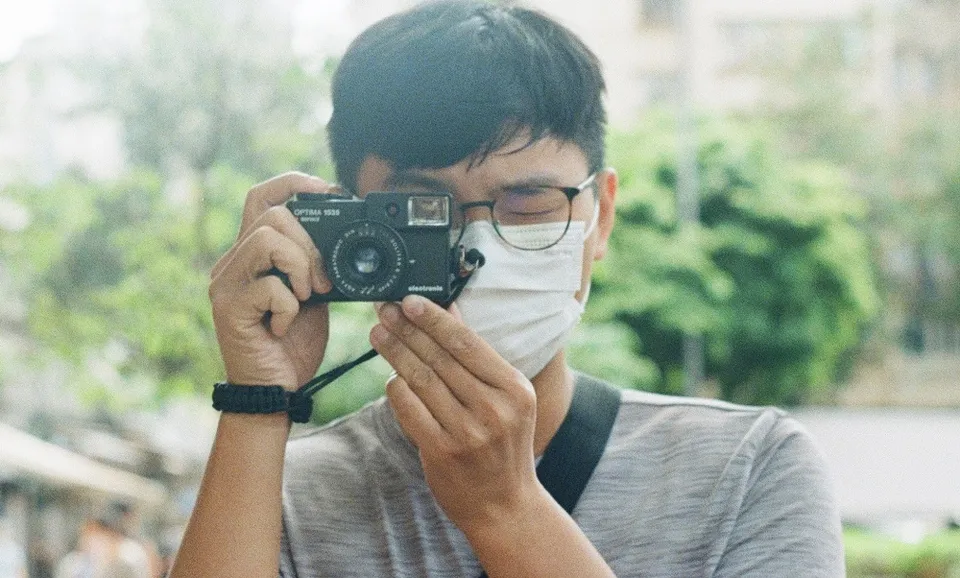Agfa Optima 1535 Sensor
In my exploration of analog photography, my first couple cameras were Agfa cameras. I had 4 Solinas and a rather rare Isoly 100 which nobody really cares about. Then I bought AGAT 18K for some proper glasses. Impressed by the outcome, I began my search for even better glasses.
Buying SLRs/M39 rangefinder with interchangeable lenses would have seemed like the end of the road, thus my search was still limited to fixed lens rangefinder.
Before making the move to acquire this top-of-the-line Agfa camera, 1535 has been on my radar for a long time. Priced at around HK$1,600 to up to HK$2,600, 1535 was quite are rare on eBay and local Carousell.

Until one day, an 1535 appeared on eBay auction. From the photo it seemed well-used by a caring photographer and was claimed to be CLA'ed previously. I had to slam that "Buy Now" button to pay a premium, instead of joining the bid and risk losing it to someone else.
Agfa Optima line did not start with the 3/5/10/15-35 series. In 1959 the original Optima was introduced, still having the tall, bulky form factor not unlike Solina. Through the 1960s various Optima models were made all with programmatic exposure powered by Selenium meters.
Towards the end of 1960s, the Optima Sensor line was introduced, with body design erring towards portable, compact rectangular shape closer to the Japanese compact cameras of the time. The typical shutter release button has been replaced by Agfa's signature big red dot button too. The long-used yet short-lived Selenium meters was first replaced by CdS meter, which requires battery but is more resistant to wearing out with age.
Then came the Optima Electronic Sensor line of 3/5/10/15-35 & Flash, all having upgraded to CdS meter and with a clear segmentation, where the higher the number, the better the camera is. For example, the top shutter speed of 335 is 1/300s, on 535 it's 1/500s, and on 1035 and 1535 they are both 1/1000s. At the top of the line we have Optima 1535 (Optima 1535 Sensor Flash is quite a mouthful, so I will shorten it to Optimat 1535) and maybe Flash (except Qingdao-6, of course).
Optimat 1535 sports the Agfa Solitar-S multi-coated f/2.8 lens, giving it excellent sharpness and vibrant color over other Agfa lenses such as Color-Apotar and Color-Agnar of the prior generation.

Optima 1535, along with other Optima Electronic Sensor cameras are all equipped with battery powered CdS meter to shoot with automatic exposure. After loading in a roll of film, film speed may be set from the front between ISO 25 and ISO 400. From my experience, it is opening up the apreture even under daylight. It's hard to tell whether it's aperture priority or shutter speed priority.

To take a shot using Optimat 1535, first, open the lens cap. Being a rangefinder, the lens and viewfinder are not connected. Even though one can see through the viewfinder, that doesn't mean the lens cap is off. Then, align the yellow split focus patches on the viewfinder by rotating the focusing ring on the lens.
Even though there's an aperture ring, its setting is not respected unless flash is installed. Aperture and shutter speed are set automatically by the light meter. The light meter is also connected to two LEDs (quite a new tech at the time?) in the the bright, large viewfinder. When user half-press the shutter button, one of the two LEDs are lighted up. Green light means a shot can be taken at a safe shutter time. Red light means the shutter speed is slow and may result in blurry shot. By carefully and steadily holding the camera, a crispy sharp shot can still be made.
The CdS meter of Optima 1535 originally requires PX625 battery (1.35V) that has been discontinued due to its use of toxic meter mercury. Nowadays, a common replacement is 3 pieces of the slightly over-voltaged PX625A (1.5V) battery of the same shape. By using over-voltaged batteries I didn't see any impact on the exposure result. Perhaps the aging CdS meter was not really accruate or the error fell within the exposure latitude of color negative films that it didn't appear off.


Optima 1535 is a little camera that's very pleasant to use. Exposure is automatically taken care of. Focusing is easily done with focus assistance in the viewfinder. On a photowalk and when taking street photography, these features are very useful.
After having brought the Optima 1535 out for several photowalks, I can say it's a very pleasant camera to use on the street. It is portable and looks harmless, while having one of the best lenses in my inventory.
Another thing that I found nice about this camera is the shutter sound. Optima 1535 uses an electronic shutter that when released, make a high pitch "cut" sound, instead of the metallic "click" that can be heard on the mechanical Pronto or Compur-type leaf shutters. Combined with the big red-dot shutter button, it's very inviting to take shots using this camera.
I once opened the back of the camera in the middle of a roll to check whether there are any water leaking into the camera body, and silly me, I did that in broad daylight. On other cameras like the Isoly 100 that would have ruined the entire roll. But no, Optima 1535 has a small cover over the take-up poll, leaving only a thin slit for the film go through. Only the bottom part of the shot resulted in light leak, and all other shots eneded up 100% unaffected.
You may wonder why isn't there a film re-winding dial on Optima 1535 to wind the film back into the film cassette. On this camera, there's a little "R" button that when pushed down and locked in position, will reverse the direction of film winding. Thus, the film advance lever becomes film rewind lever. This ingenious design helps saveing space, making the already-compact camera more compact.
One minor shortcoming about Optima 1535 though, is the anchor point of its strap. The strap, as you can see in a photo above, is connected on the left side of the camera, while I am right-handed. When trying to shoot it'll end up at a weird position that's best explained by the below photo.

Update 2023-04-02
Unfortunately, this camera took an influencer bullet from grainydays on YouTube. That means this already rather rare camera is going receive price raise on auction sites. For example, I got mine for the already expensive price of $2K HKD and for most of the time, there was no listing on eBay. Today there are 3 being sold for $3.5K+ HKD, posted on 2023/03/30.
Like, go bother someone else's favorite camera. Go kill some SLRs, or Canon with your influencer bullet instead of Optima 1535, because I don't like mechanical SLRs and Canon.
I am in no position of stopping people from doing their review, but expect no less rant from me as 70%+ of my gear posts are composed of confirmation bias and rants. If I sounded like Jason, that's because I watch his YouTube channel in the past 2 years until I quitted YouTube.
And the upside of this is someone's comment on that video:
Nice to know: if you put a hot shoe cover inside the shoe, the camera shoots at 1/30s but you can choose the aperture manually (simulate flash mode)
—Jakub Cezary Kaliszewski
Here you go, the 30% that's not rant. Oh but is it confirmation bias?
